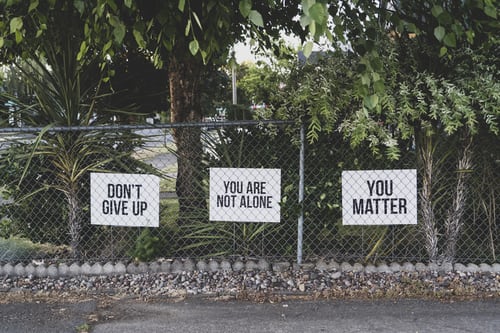There is a growing concern amongst professionals regarding a rise in domestic abuse during the COVID-19 pandemic. In the period from March 1 through April 25, 2020, the San Diego County Sheriff’s Department logged 2,309 domestic-related calls. This is roughly a three percent increase from the 2,237 calls handled during the same date range in 2019. In this article, we will provide insight into how to deal with domestic violence during COVID-19
How to Deal With Domestic Violence During Covid-19
Family Code Section 6203 defines domestic violence as intentionally or recklessly causing or attempting to cause bodily injury, sexual assault, placing a person in reasonable apprehension of imminent serious bodily injury to that person or another, or any other behavior that could be ordered under the Domestic Violence Protection Act.
It is important to remember abuse is not limited to the actual infliction of physical injury or assault. Abuse can come in the form of disturbing another’s peace, stalking, or harassing through email, phone calls, and text messages.
During this unprecedented time, the San Diego Superior Court has remained open for new domestic violence cases, accepts Domestic Violence Temporary Restraining Orders even though the courts are closed for hearings.
If a victim suffered domestic violence, he or she can contact the police to make a report and file for a restraining order protecting them from the other party. A Domestic Violence Temporary Restraining Order can include orders for custody and visitation, and exclusive use, possession, and control of a residence.
Resources for Victims
Multiple resources throughout the county remain open for victims of domestic violence. Victims have access to telehealth counseling, transitional housing, and domestic violence shelters.
A victim who has suffered domestic violence can call 2-1-1 for information and referrals for community, health, and disaster resources. Additionally, YWCA, Women’s Resource Center, San Diego LGBTQ Community Center, Center for Community Solutions, and Community Resource Center are all operating and offering shelter to victims of abuse.
If you are a victim of domestic violence, you should not hesitate to call the police or seek help—such as seeking access to a shelter, if you are in immediate danger. Your next step should be to obtain a Domestic Violence Temporary Restraining Order through family court.
Restraining Order Process
When you request a Domestic Violence Temporary Restraining Order, you must complete out the correct forms and give them to a court clerk. You should also make copies of any documents you would like the court to consider such as text messages, phone records, photographs, or police reports.
The clerk will take your paperwork to a judge for review of your documents to determine whether to grant the Domestic Violence Temporary Restraining Order. If the request is granted, the documents will be given to the sheriff to be served on the other party. There will be a hearing date set, so the other party must be served before this hearing date.
Once a Domestic Violence Temporary Restraining Order is granted, it is enforceable by the sheriff if it is violated. Any custody and visitation orders contained in the Domestic Violence Temporary Restraining Order are also enforceable.
Every courthouse in San Diego County (Downtown, Vista, El Cajon, and Chula Vista) is processing requests for Domestic Violence Temporary Restraining Orders during the pandemic. Resources are available countywide to assist victims through this uncertain time.
Rules to Follow After Being Served
If you have been served with a Domestic Violence Temporary Restraining Order and are being accused of domestic violence, you need to read the order (Form DV-110) very carefully so you understand exactly what the restraining order prohibits you from doing.
For example, if you are restrained from contacting the petitioner, do not reach out to members of his or her family or friends and ask them to pass messages onto the protected party. This is a violation of the restraining order and violations of the temporary order are considered when the court is determining whether to grant a permanent domestic violence restraining order.
If you are a restrained party, you are not required to serve a response to the restraining order on the other party, but if there are documents you would like the court to consider, you should serve those on the other party before the hearing date.
Filing a Declaration
You also have the option of filing a declaration setting forth the reasons you don’t believe a permanent restraining order should be granted. Keep in mind this declaration can be used against you if there is a criminal case for the domestic violence incident or incidents.
When the court is operating at full capacity, a hearing will be set for approximately 21 days after the initial domestic violence temporary restraining order is granted or denied. The hearing date can be found in the DV-109 Form.
Due to the court’s closure related to COVID-19, the hearing date may be after 21 days, as the court’s reopening depends on the governor lifting the shelter in place order.
Safety is the Courts Priority
The courts have indicated domestic violence temporary restraining orders will be given the highest priority once the courts reopen, regardless of whether the court opens in its entirety or a limited capacity.
Domestic Violence in California is taken very seriously. If you are a victim of domestic violence or if you have been served with a restraining order, you must understand your rights and how to proceed with the restraining order hearing.
Here at JWB Family Law, we care about you and want to see you safe and protected. Call us today to schedule a consultation through phone or video using Zoom, so we can be the support team you need during this time.






